A brief overview of some of the unique challenges involved in B2B pricing and how to handle them
Pricing exercises are a common component of market research projects and a range of methods have been developed to identify the optimal price for a new product or service being brought to market. The most commonly used methods are the Van Westendorp Price Sensitivity Meter, the Gabor-Granger pricing model or some form of choice-based exercise (MaxDiff or Conjoint). All of these methods are well established and widely understood, but they were all designed for consumer markets and often we encounter situations in B2B contexts where these models are not sufficient. Below are a few examples of additional complications that may arise and how we can work around them.
Not All Customers Are Created Equal
The first example of how B2B markets differ from others is fairly obvious but can lead to serious miss-steps if not addressed.
We have a new product we want to bring to market. We are not sure what would be an appropriate price range for our new product as it is too different from existing solutions that are available, so we conduct a Van Westendorp Price Sensitivity Meter including the extension. We have designed our sample to be representative of the market.
Applying the standard approach to analyzing the results suggests an optimal price in the range of $12-15$ but digging deeper it becomes clear that going to market at this price would be a mistake.
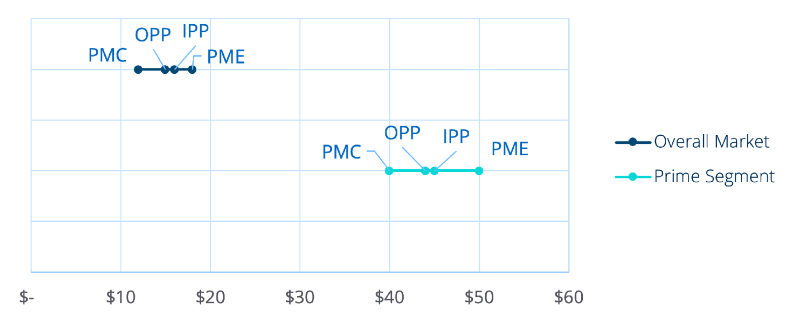
A small segment of the sample shows very keen interest in the solution seeing large benefits in its novel features. Running the exercise for just this segment suggests a price range of $40-$50. Furthermore, although the segment is small, the businesses in the segments are not; each would likely purchase a large number of products each year at this higher price (as indicated by their answers to other questions in the survey).
Re-weighting the data to reflect the likely volumes of purchase each potential customer represents, and using the extension questions to estimate revenue generated at each price point, we can see that targeting this premium segment by aiming for a price in the $40-$50$ price range results in significantly higher expected revenue.
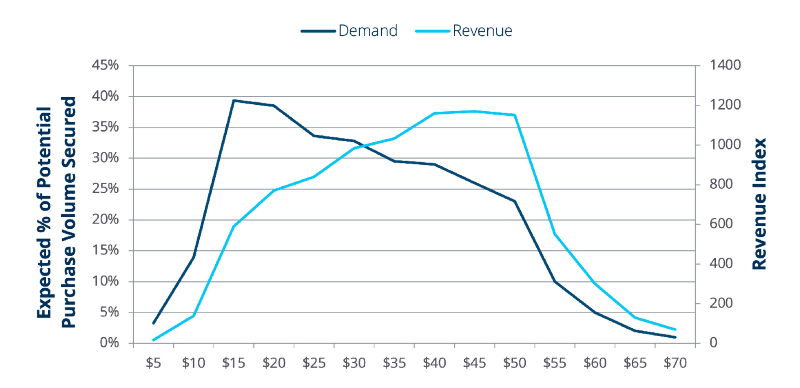
Perplexing Prices
In B2B settings, prices often have more than one component to them. A new support service may have a fixed monthly cost with a variable cost charged for each support call after the first 5 of the month, for example. How can we model this?
By adapting the Gabor Granger exercise we are able to generate a demand map of the price space.
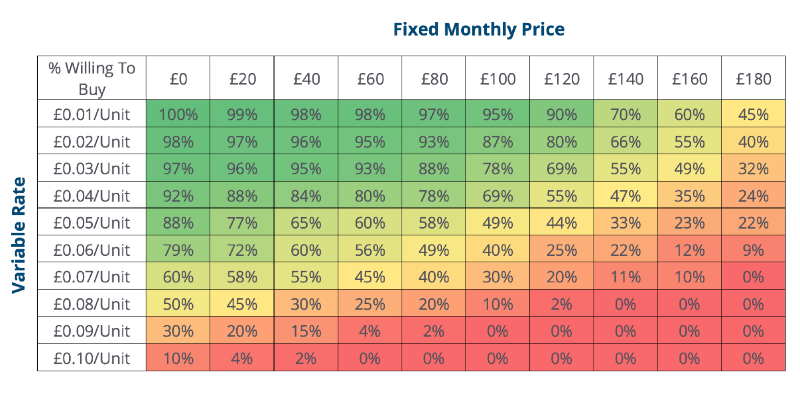
This can in turn be used to produce a revenue index for the space and identify the price configurations which would result in the largest expected revenue.
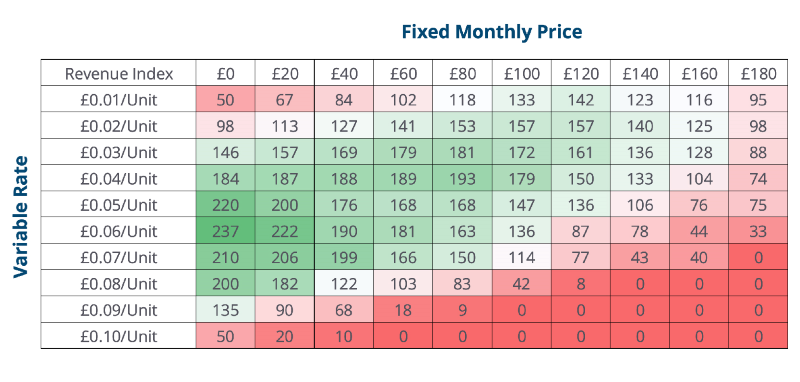
Drop The Base Low
A client approached us with a potential new product that they wanted to test the appeal of and to help them understand how much they could potentially charge for it. They wanted to understand the value assigned to each functional benefit offered by the product as well as the overall willingness to pay for a solution containing a combination of these benefits.
To any experienced researcher this sounds like a classic candidate for a choice based conjoint study, but there is one problem: the number of potential customers is very limited and we estimate that the sample we can obtain is at most 40. This is pretty common in B2B markets, and it makes a conjoint study impracticable.
To generate the insights that the client required we conduct a Premium Extension exercise, mapping out the relative premiums buyers would be willing to pay for each benefit the new solution would introduce over their existing product, as well as what they would be willing to pay for something which combined multiple additional benefits.
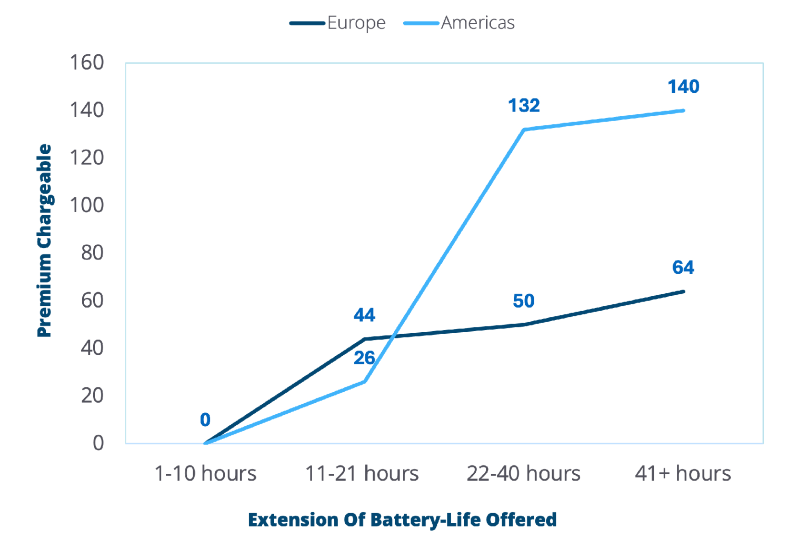
The results are less statistically robust than a conjoint study but provide the same ability to assess the relative appeal of components and identify suitable price points for variously configured solutions.
To discuss how our tailored insights programs can help solve your specific business challenges, get in touch and one of the team will be happy to help.
